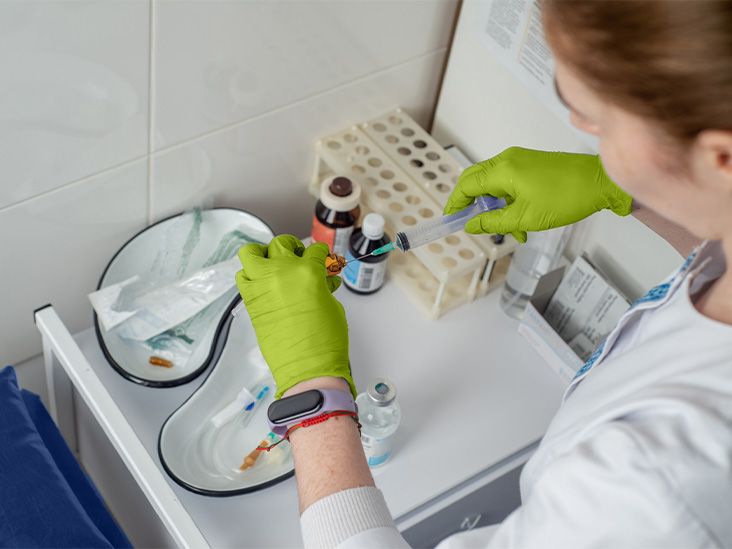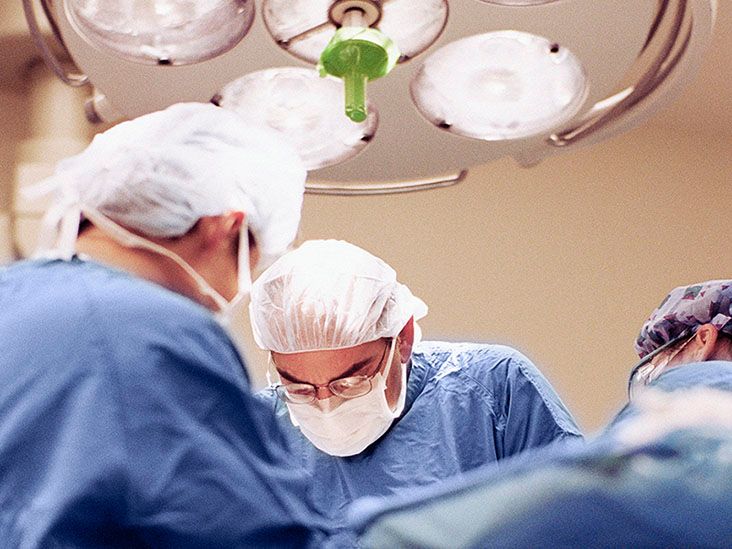If you're worried about your stomachor someone you love'stake a breath. You're not alone, and you're already doing something important by looking for clear, trustworthy guidance. In most cases, a stomach cancer diagnosis starts with noticing symptoms and talking through your risks. Then, things move (fortunately) pretty quickly: the key test is an upper endoscopy with a biopsy. That tissue sample is the only way to confirm stomach cancer. After that, staging tests map where the cancer is and guide the best next step. My goal here is to lay out the path from "something's off" to "I know what's going on and what to do next," in plain, human language.
Fast facts
Timing matters with stomach cancer diagnosis. Getting symptoms checked early can absolutely change outcomes. So what should you watch for, and when should you call your doctor?
Common stomach cancer symptoms (and what's "concerning")
Here's the tricky part: early stomach cancer can whisper, not shout. You might notice subtle changes that are easy to brush off as "just stress" or "I ate too fast." But if these stick around, it's worth checking in.
Early, subtle signs
- Persistent indigestion or heartburn that doesn't quit with simple remedies
- Feeling full very quickly or after small meals
- Unexplained weight loss (your clothes fit differently and you didn't try)
- Nausea that lingers, sometimes with mild abdominal discomfort
- Fatigue or signs of anemia (shortness of breath, lightheadedness)
Red flags needing prompt evaluation
- Trouble swallowing or food "sticking"
- Vomiting blood or passing black, tarry stools
- Persistent vomiting or dehydration
- Significant, unintentional weight loss
- New, severe, or worsening pain
Who is higher risk and may need earlier testing
Risk doesn't equal destinybut it helps guide how aggressive we are with testing.
Higher risk includes
- Family history of stomach cancer or known genetic syndromes (like hereditary diffuse gastric cancer, Lynch syndrome, Peutz-Jeghers)
- Long-standing infection with H. pylori bacteria
- Smoking or heavy alcohol use
- Previous stomach surgery or chronic gastritis
- Diets high in salted, smoked, or preserved foods and low in fresh produce
- Younger people with strong family histories deserve a lower threshold for endoscopy
Balance of benefits and risks
Benefit
Earlier stomach cancer diagnosis improves the chance of cure. Catching cancer when it's shallow and hasn't spread can mean less invasive treatment and better quality of life.
Risks (and how teams reduce them)
Endoscopy can cause minor throat soreness; bleeding from biopsy is uncommon and usually controlled quickly. Imaging brings small radiation exposure, but protocols minimize dose while keeping images useful. The benefits of clarity and timely treatment typically outweigh these risks.
First visit
Your first clinic visit sets the stage. Think of it as building a puzzle's border before filling in the middleimportant, organized, and reassuring.
What your provider will ask and check
Expect questions about your symptom timeline, appetite and weight changes, medications (especially NSAIDs like ibuprofen), personal and family history, and any prior stomach issues. A physical exam focuses on your abdomen and lymph nodes. None of this is meant to scare youit's about finding patterns that lead to the right tests, fast.
Initial tests that guide next steps
Common first-line tests
- Blood tests: look for anemia, infection, inflammation, and liver function changes
- Stool tests: check for hidden blood
- H. pylori testing: breath, stool, or biopsy-based
When these suggest moving to definitive testing
If symptoms persist or tests raise suspicion, your provider will likely move to an upper endoscopy. Often, even if early tests are "normal," persistent red flags still warrant an endoscopy to be safe.
The core
Let's talk about the star of the show: the upper endoscopy and biopsy. For stomach cancer diagnosis, this is where answers live.
Upper endoscopy (EGD): what happens, how long, recovery
An upper endoscopy (also called EGD) is usually done with light sedation so you're comfortable and sleepy. A flexible camera goes through your mouth to look at your esophagus, stomach, and the first part of the small intestine. It usually takes 1020 minutes, and most people head home within a couple of hours. You'll need someone to drive you. EGD lets doctors see suspicious areas, take biopsies, and sometimes treat small early lesions on the spot. It's first-line for suspected gastric cancer in major centers, according to resources from organizations like the National Cancer Institute and Mayo Clinic.
What EGD can and can't show
It can show ulcers, masses, abnormal tissue, and subtle changes in the lining. It cannot, on its own, tell how deep a tumor goes or whether it has spreadthat's where staging tests come in.
Biopsy: confirming the diagnosis
During EGD, tiny tissue samples are taken. A pathologist examines them under a microscope, looking for cancer cells and noting the type (most are adenocarcinomas). The pathology report is your foundation for everything that follows. It may also include H. pylori results, since treating this infection can be important.
Turnaround times, false negatives, and repeat biopsy
Many pathology results return within a few business days. Rarely, if the sample misses the target (think of sampling the crust but not the filling), results can be inconclusive. If suspicion remains high, your team may repeat the endoscopy or use advanced techniques to get more tissue. It's not failureit's persistence.
Biomarker and molecular testing after biopsy
After cancer is confirmed, molecular tests help tailor therapy. Typical markers include HER2 (which can open the door to targeted therapy), PD-L1 and MSI/dMMR (which help predict response to immunotherapy), tumor mutational burden (TMB), and occasionally NTRK fusions. These aren't just alphabet soupthey can translate to more effective, personalized treatment options, as emphasized in leading oncology guidance and resources from the NCI and Mayo Clinic.
When liquid biopsy is considered
In some advanced cases, a blood test that looks for tumor DNA (circulating tumor DNA) can add helpful information or monitor response. It doesn't replace a tissue biopsy for initial diagnosis but can complement it, especially when getting tissue is hard.
Staging tests
Once you have a confirmed stomach cancer diagnosis, the next big question is "How far has it gone?" That's staging. It's about seeing the full picture so your team can aim precisely.
Imaging and procedures used to stage stomach cancer
CT chest/abdomen/pelvis
This is the workhorse. It looks for spread to lymph nodes and organs. Sometimes contrast is used for better detail.
PET-CT
PET-CT highlights areas with high metabolic activity, helping find active cancer that CT might miss. It isn't always necessary, but it's helpful in select scenarios, as discussed by the National Cancer Institute.
Endoscopic ultrasound (EUS)
Think of EUS as a depth finder. It helps estimate how deeply the tumor invades the stomach wall and evaluates nearby lymph nodes. Many major centers prioritize EUS for local staging.
MRI in select cases
MRI can be used for specific questions (for example, liver lesions) when more detail is needed.
Diagnostic laparoscopy
This minimally invasive surgery allows surgeons to look inside the abdomen for tiny cancer deposits not visible on scans and sometimes to collect fluid for analysis. It can change plans from "go straight to surgery" to "start chemotherapy first," which often improves outcomes.
Stomach cancer stages 04 (plain-language snapshot)
- Stage 0I: Very early or shallow disease in the stomach lining. These cases can often be curedsometimes even with endoscopic removal alone.
- Stage IIIII: Deeper tumors and/or more lymph nodes involved. Typically treated with a combination of surgery and chemotherapy (before and/or after). Prognosis is still hopeful, especially with modern treatment plans.
- Stage IV: Cancer has spread to distant sites. The focus shifts to controlling disease, easing symptoms, and preserving quality of life with systemic therapy and supportive care.
Next steps
We've confirmed the diagnosis and staged it. Now what? This is where your care team shines.
Who joins your team (and why that helps)
You may meet a gastroenterologist (does the endoscopy), a surgical oncologist (handles operations like gastrectomy), a medical oncologist (plans chemotherapy and targeted/immunotherapy), a radiation oncologist (used in selected situations), a pathologist (reads biopsies), and a genetic counselor (assesses hereditary risk). Supportive and palliative care specialists help manage symptoms and keep you feeling as well as possible. Centers like Mayo Clinic and the National Cancer Institute emphasize this team approach because it improves decision-makingand often outcomes.
Typical timeline from first visit to treatment start
Every journey is unique, but here's a common flow: initial evaluation EGD/biopsy within days imaging/EUS within 12 weeks tumor board review treatment plan start soon after. If you're thinking, "That sounds like a lot," you're rightbut it's also surprisingly doable when a coordinated team leads the way.
Getting a second opinion
Second opinions are a sign of strength, not doubt. They're especially helpful for complex cases or when major surgery is being considered. Send pathology slides, radiology images, and key reports. Many specialized centers collaborate closely with local doctors, so you don't always have to travel for treatment. Guidance from sources like the NCI and large academic centers supports the value of second opinions and multidisciplinary reviews.
Treatment overview
Treatment depends on stage and biomarkers. Two people with "the same" stomach cancer can have very different best pathsthat's by design.
Curative-intent options for localized disease
- Endoscopic resection: For very early, small lesions confined to the inner lining. Little downtime; organ-sparing when appropriate.
- Surgery: Subtotal or total gastrectomy with lymph node dissection. It's a big step, but for many, it's the key to cure.
- Perioperative chemotherapy: Medicine before and after surgery can shrink tumors and reduce recurrence risk.
- Radiation: Considered in select scenarios, often when margins are close or as part of a combined approach.
Options for advanced or metastatic disease
- Systemic chemotherapy: Controls growth and symptoms, extends life.
- Targeted therapy: For HER2-positive cancers, adding targeted drugs can make chemo more effective.
- Immunotherapy: For MSI-H/dMMR or PD-L1positive cancers, immune-based treatments can lead to meaningful responses.
- Palliative procedures: Stents for blockage, radiation for bleeding, and tailored symptom relief to keep you comfortable and active.
Balancing benefits and risks
Every option has trade-offs: side effects, time commitments, effects on appetite and digestion. It's okay to ask blunt questions and weigh what matters most to you. Clinical trials can offer access to promising therapies; ask your team to check for a good match. According to expert guidance from major centers like Mayo Clinic and the National Cancer Institute, treatment is increasingly personalizedyour biomarkers and stage drive the plan.
Practical prep
Here's how to make every appointment and test count.
Before endoscopy and imaging
- Fasting: Follow instructions on when to stop eating and drinking (usually nothing after midnight for morning procedures).
- Medications: Ask about pausing blood thinners or certain diabetes meds; never stop anything without your doctor's okay.
- Ride home: Sedation means no driving after EGDplan your pickup.
- Questions: Jot them down. It's easy to forget mid-visit.
Bring this to appointments
- Symptom log with dates, what helps, and what worsens things
- Medication and supplement list (including doses)
- Family medical history, especially cancers and ages at diagnosis
- Prior labs or imaging reportshaving them handy saves time
Key questions to ask
- What stage is my cancer, and how confident are we?
- What biomarkers do I have, and how do they influence treatment?
- Am I a candidate for endoscopic resection or surgery?
- What are the benefits and risks of each option?
- Should I get a second opinion or genetic counseling?
- Are there clinical trials that fit my situation?
Real life
While the workup rolls forward, real life keeps happening. Waiting for calls and reading reports can make minutes feel like hours.
What patients often feel during diagnostics
Anxiety is normal. So is relief when a plan clicks into place. One patient told me the EGD felt "less scary than I imaginedlike a long nap with a sore throat after." Another said keeping a daily routineshort walks, favorite music, quick check-ins with friendskept the worry from swallowing the day. If you're struggling, tell your team. Supportive care, counseling, and patient groups can make a real difference.
Nutrition and symptom relief while you wait
Small, frequent meals are your friend. Gentle foods (broth, yogurt, soft proteins, cooked vegetables) can be easier. Hydration matters more than perfection. If your doctor recommends iron for anemia, take it with vitamin C to help absorption. Call promptly if you have bleeding, worsening pain, fevers, or can't keep fluids down.
Screening
Why don't we screen everyone in the U.S. for stomach cancer like we do for colon cancer? In short, overall incidence is lower here, so broad screening isn't currently recommended. But there are important exceptions.
Who may benefit from screening
People with strong family histories or genetic syndromes (hereditary diffuse gastric cancer, Lynch syndrome, Peutz-Jeghers) may need earlier and regular endoscopic screening and, in very high-risk cases, proactive surgery. Guidance from expert centers emphasizes individualized plans based on risk profile.
Global perspective
In countries with higher rates of gastric cancer, population screening with endoscopy or specialized X-rays is more common. Blood-based screening research is evolving, but it's not ready to replace endoscopy. Staying current with guidance from trusted organizationslike the NCIcan help you and your doctor make informed choices.
Costs
Let's talk logistics for a secondbecause the calendar and the wallet matter, too.
Insurance basics and authorizations
Endoscopy with biopsy, imaging (CT, PET-CT, MRI), anesthesia, and pathology are common components. Prior authorization may be needed for imaging or molecular tests. Ask your team to check benefits, and request cost estimates so there are fewer surprises.
Transportation and time off
Plan for a day off for EGD due to sedation. You'll feel drowsy and should rest. If you have kids or pets, line up help. For imaging, the day's impact is usually lighter, but give yourself gracethis is a lot to carry.
Trust and sources
When it comes to stomach cancer tests, staging, and treatment, you deserve information that's rigorous and human. We rely on guideline-grade references and continuously review updates so you can make choices with confidence. According to widely trusted frameworks from the National Cancer Institute and comprehensive resources at Mayo Clinic, the steps in this article reflect current best practices, with room for personalization based on your situation and values.
We also keep an eye on evolving evidencelike new biomarker-driven therapies or trial resultsand we're transparent when the science is still catching up. No overpromises, just honest talk about benefits, risks, and what we know today.
Here's the heart of it: a stomach cancer diagnosis usually hinges on one key stepan upper endoscopy with biopsyfollowed by smart staging to map your best path forward. Acting on persistent symptoms or red flags early can change everything. Knowing your stage and biomarkers helps your team tailor treatment to you. It's okay to ask for a second opinion, to bring your questions, and to take the time you need to understand your options. You don't have to do this alone. If you're ready, call to book the evaluation. If you're unsure, start by writing down your symptoms and questionsthen reach out. And if you want to share your story or ask something that's been on your mind, I'm listening. What matters most to you as you take the next step?
FAQs
What are the early signs that might suggest stomach cancer?
Early symptoms often include persistent indigestion, feeling full quickly, unexplained weight loss, lingering nausea, fatigue, or anemia. These signs are subtle and can be mistaken for other conditions.
How is a stomach cancer diagnosis confirmed?
The definitive diagnosis is made by an upper endoscopy (EGD) with a tissue biopsy. The pathologist examines the sample for cancer cells, confirming the presence and type of stomach cancer.
What staging tests are performed after a diagnosis?
Staging usually involves a CT scan of the chest, abdomen, and pelvis, possibly a PET‑CT, endoscopic ultrasound (EUS) to assess depth of invasion, and sometimes diagnostic laparoscopy to detect tiny metastatic deposits.
Should I seek a second opinion for my stomach cancer treatment?
Yes. A second opinion—especially from a multidisciplinary cancer center—can confirm the stage, review biomarker results, and ensure the proposed treatment plan aligns with the latest guidelines and your personal preferences.
What factors determine the treatment approach for stomach cancer?
Treatment depends on the cancer stage, location, histology, and biomarkers (e.g., HER2, MSI‑H, PD‑L1). Early-stage disease may be treated with endoscopic resection or surgery, while advanced disease often requires chemotherapy, targeted therapy, and/or immunotherapy.
Disclaimer: This article is for informational purposes only and does not constitute medical advice. Always consult with a healthcare professional before starting any new treatment regimen.
Related Coverage
Stomach cancer treatment options, risks, and recovery tips explained in plain language—helping you ask the right questions now....
Stomach cancer chemotherapy uses drug combos before or after surgery and as treatment for advanced disease, with side‑effect tips....
Simple steps—maintain weight, eat more veggies, quit smoking, limit alcohol, test for H. pylori to prevent stomach cancer....
Is there a real connection between kimchi stomach cancer risk? Get the facts on fermented food safety and what you can do to stay healthy....
Subcutaneous immunotherapy for GI cancer offers a convenient alternative to IV treatment. Find out how it works and who it’s for....
Compare stomach cancer vs ulcer symptoms, causes, tests and treatments, and spot red‑flag signs that require urgent attention....
Get insights on how immunotherapy for stomach cancer works, who benefits most, side effects, and key questions for your oncologist....
Get essential info on esophageal and stomach cancer symptoms, risk factors, diagnosis, and treatment options to help you stay informed and prepared....
Gastrectomy surgery reshapes digestion; learn types, recovery timeline, diet tips, and supplements for a healthier post‑op life....
Learn how age, H. pylori, diet, smoking, and genetics affect stomach cancer risk and discover steps to lower your chances....









